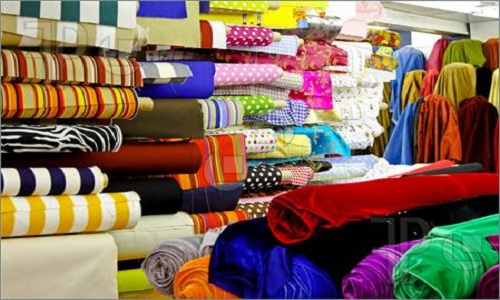"EU’s sales to the US recorded a noticeable growth rate (+16 per cent), thanks to a favorable exchange rate. Among the EU top 10 customers, moderate expansion was recorded by Hong Kong and China On the contrary, exports to Russia (-27 per cent) and Ukraine (-1 per cent) slipped back again, as economy remains depressed in these markets. Clothing exports to its main consumers indicated a higher growth rates than for textiles."

According to a statement of CITH, Textile and Clothing Information Centre, the EU textile and clothing exporters succeeded in gaining further market shares in third countries (+3.6 per cent). According to CITH, the European Union’s (EU’s) imports picked up by +9.6 per cent in value terms, due to sharp increases from Asian countries. On the contrary, imports from the Mediterranean area (Turkey, Egypt, Morocco, and Tunisia) achieved a modest growth or even decreased over the period. According to CITH, 2015 evolution impacted the overall trade balance of the EU-28 whose deficit deteriorated further in value, by + 14 per cent (+29 per cent for textiles and +13 per cent for clothing.
EU’s sales moves north

EU’s sales to the US recorded a noticeable growth rate (+16 per cent), thanks to a favorable exchange rate. Among the EU top 10 customers, moderate expansion was recorded by Hong Kong and China On the contrary, exports to Russia (-27 per cent) and Ukraine (-1 per cent) slipped back again, as economy remains depressed in these markets. Clothing exports to its main consumers indicated a higher growth rates than for textiles. Data shows a noticeable growth in the US, Hong Kong, South Korea, Canada and China (with rates between +19 per cent and +22 per cent), which made the US the second largest EU customer and China the 6th largest customer. Exports to the Saudi Arabian and Mexican markets also experienced a significant growth (+17 per cent and +15 per cent). Russia and Ukraine on the other hand declined, following the political turmoil.
Textile imports grows
As far as the textile imports coming from EU top 20 suppliers, they were all up, except from Egypt, Thailand and Australia. With a 16 per cent growth, the US witnessed the highest growth among the main suppliers, followed by China, Pakistan and Vietnam, with 11 per cent. Meanwhile, Morocco and New Zealand recorded 17 per cent and 39 per cent increase at the bottom of the ranking. Double digit growth recorded from most Asian countries as far as clothing imports are concerned. China, the top supplier recorded a 6 per cent increase, with 30 billion of clothing articles sold to the EU market whereas Bangladesh recorded a 24 per cent increase recording the second place. Meanwhile, strong imports’ upturns were also observed from Cambodia (31 per cent), Vietnam (26 per cent), Hong Kong (25 per cent) and the US (26 per cent). Myanmar is now ranking 17th in the top-20 EU’s clothing suppliers with a 79 per cent increase.
Since 1981, CITH, the Textile and Clothing Information Centre, provides statistical information on trade in textile and clothing. The basic data are collected by Eurostat from national customs and subsequently treated by the CITH. The organization can provide tailor-made reports on customers’ request, which can be updated on a regular basis, or adapted to a specific format. Statistical information covers EU goods’ flows (by products or CN/HS codes), trade balance, export and import average unit prices and major EU exporters and importers.












